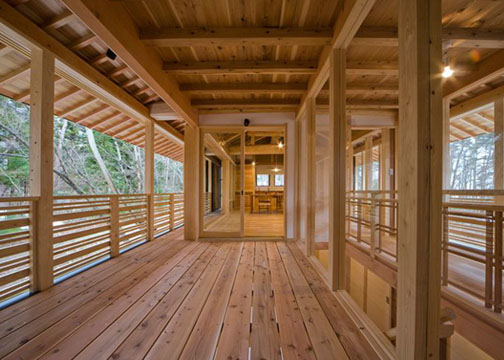
All Wood Everything
A post that celebrates wood as an interior material!
Beyond use as a basic framing material, wood panels and flooring have been used in interiors as a finish material throughout history. Wall panels were first used extensively during the Gothic period and then became a signature of the Tudor and Elizabethan interiors; where they were used throughout the rooms in houses and were often ornately carved. Traditionally the finishes were made of either oak or pine, but during the 20th century a variety of materials came into use for interior application: solid wood (walnut, birch, mahogany, redwood), plywood, vinyl, hardboard, pegboard and translucent materials (composites or plastics).
While it has lingered as a relatively popular floor material in contemporary interiors, wood has often been replaced by plastics, metals and tile (etc) for flooring, wall or ceiling applications and a variety of these are even made to mimic wood; especially as the industry has made them more readily available as cheaper alternatives. However, recently we have seen a resurgence in the popularity of natural wood, as an all-over finish material, which has several benefits both aesthetically and environmentally.
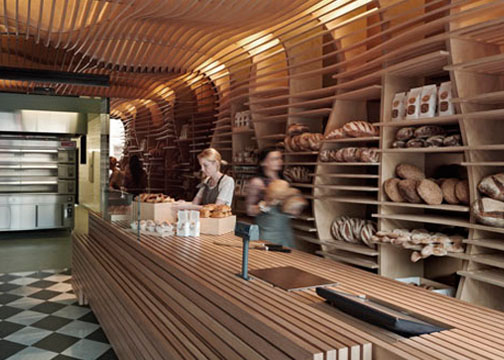
(bakery, dezeen.com)
On the aesthetic side, wood brings in a natural element to any space and often works next to a variety of other materials; It comes in a range of hues and textures (with and infinite number of staining options) and can be used to tie together different elements of a space (furniture and built elements); and it lends itself to a range of interiors styles (rustic, modern, traditional, etc). It adds softness and creates a relaxing environment, and has been studied as a material that reduces stress.
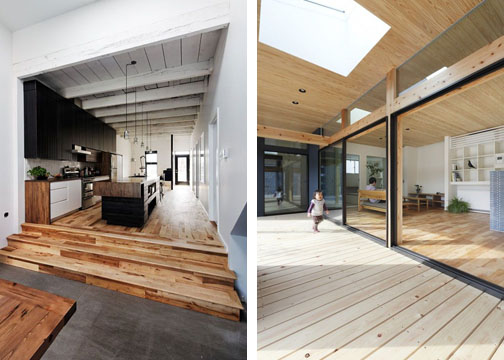
(wood kitchen, tumblr and japanese house, archdaily.com)
On the environmental side, wood is a renewable resource and one of the best green building materials you can choose. In the Pacific NW there are options for finding locally sourced woods and several varieties are grown as rapidly renewable forests (hybrid poplars) which means they grow quickly and/or can be harvested young. (Cork, which is the bark from a tree – the Cork Oak – is also technically rapidly renewable since the cork can be removed every 9-13 years without damaging the tree). There are a variety of options for finding reclaimed and salvaged wood: check out Viridian Wood – a Portland based company that makes wood products from a variety of reclaimed woods, including transpacific shipping crates. Wood also has great insulating and moisture absorbing (for temperature control) properties, and surprisingly works great for fire protection (depending on the use): heavy timbers burn slowly, and the layer charred wood that builds up during a fire protects the structural integrity of the member.
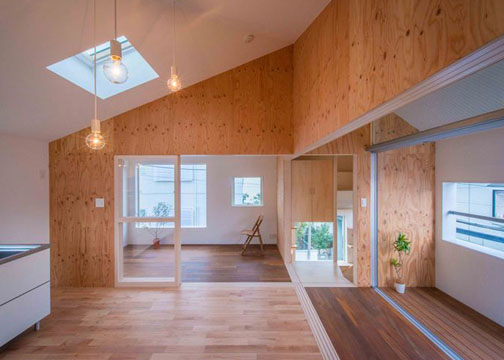
(japanese house, archdaily.com)
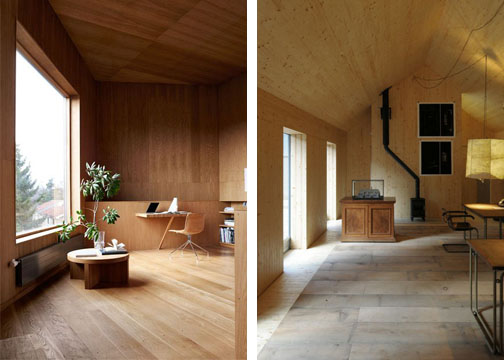
(Villa Weinberg, dezeen.com and UK Architect’s office, archdaily.com)
In finish applications, wood is flexible and often easy to replace or repair depending on the particular application. As a floor material, it is long lasting and can be refinished: when the top layer wears down too much or becomes extensively marked, a solid wood floor can be sanded and refinished, allowing many traditionally laid wood floors to last over 100 years through multiple refinishes. (Many of the pressed/composite products have a veneer that can last for 1-2 refinishes, but often they last about 1/3 to 1/2 as long as solid wood planks.) If the wood planks are nailed, damaged portions or individual planks can be replaced. As a ceiling material wood is a decent sound absorber (especially when perforated or used with a fabric backing) and as wall panels it can be applied as clip-in modules that are relatively easy to remove, replace or repair.
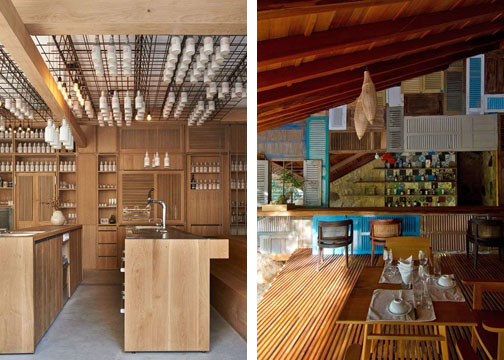
(cocktail bar, dezeen.com and 9 Spa, dezeen.com)
Recently, there has been a mass return in the industry to uses of wood both as a structural material and in interior design as a finish material (Check out this awesome TEDtalk about the future of wood and why we should build wooden skyscrapers). Today, when we can make almost anything out of plastics (these have their place in the design world, but often get overused) so it is refreshing to see many modern projects returning to interiors filled with wood finishes. While many designers pursue this route for environmental reasons (green building purposes: LEED, the Living Building Challenge, etc), most recognize that nothing is more beautiful and long-lasting than a good chunk of wood!
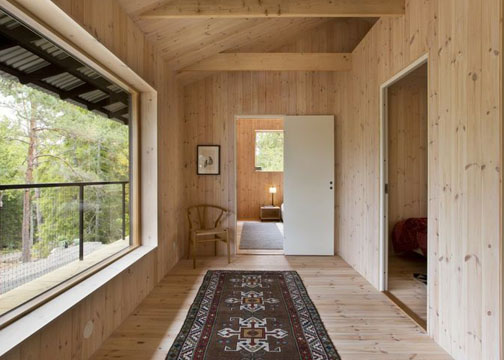
(holiday house, archdaily.com)


